
Frequently Asked Questions
If you have a query about a service or our seasonal lawn treatments, please refer to the frequently asked questions below. Alternatively, if you can’t find what you’re looking for, please don’t hesitate to get in touch.
-
Is ProGrass part of a franchise?
No. ProGrass is a completely Independent business enabling them to source their own products from local suppliers and make unrestricted business decisions without having to answer to anyone.
-
Do I have to be at home when you call?
You don’t have to be in, all we need is access and you will receive a reminder via email, text or phone call in advance so you can open gates etc for us to gain entry.
-
What is the best payment method?
Payment will be required after each visit. The operator will take the payment by either card, cheque or cash.
-
Do I have to sign a contract?
No, and you can cancel at any time. For direct debit schemes, this will be worked out on a work done against payments received basis which will leave a credit or balance.
-
Which areas do you cover?
We are based in Bingham, Nottingham and cover the whole of the Nottinghamshire area as well as some of the adjoining fringes of Derbyshire, Leicestershire and Lincolnshire. If in doubt please contact us and we can provide an answer for you.
-
Are you insured and licensed?
We have public, liability and employer liability insurance and are trained and fully qualified to use all of our products, tools and machinery.
-
When can I cut my grass before or after a treatment?
This has changed with the more environmentally friendly products we mostly use being grey micro granules and we would suggest 1 day on either side is ok providing it is not cut too short.
-
Are your products child and pet-friendly?
Yes. The products we use are carefully chosen and among the most child and pet-friendly that are available. The environment is of paramount importance to us and we always make sure all areas of safety are adhered to.
-
Will you still treat my lawn in extreme weather conditions?
We will always do our best to adhere to weather conditions and being independent gives us the flexibility to make a decision that if they are unsuitable we will reschedule until conditions improve.
-
Can I buy the products you use and do the treatments myself?
We use superior commercial products that can only be applied professionally by fully trained, qualified and insured staff. This often works out cheaper than applying them yourself.
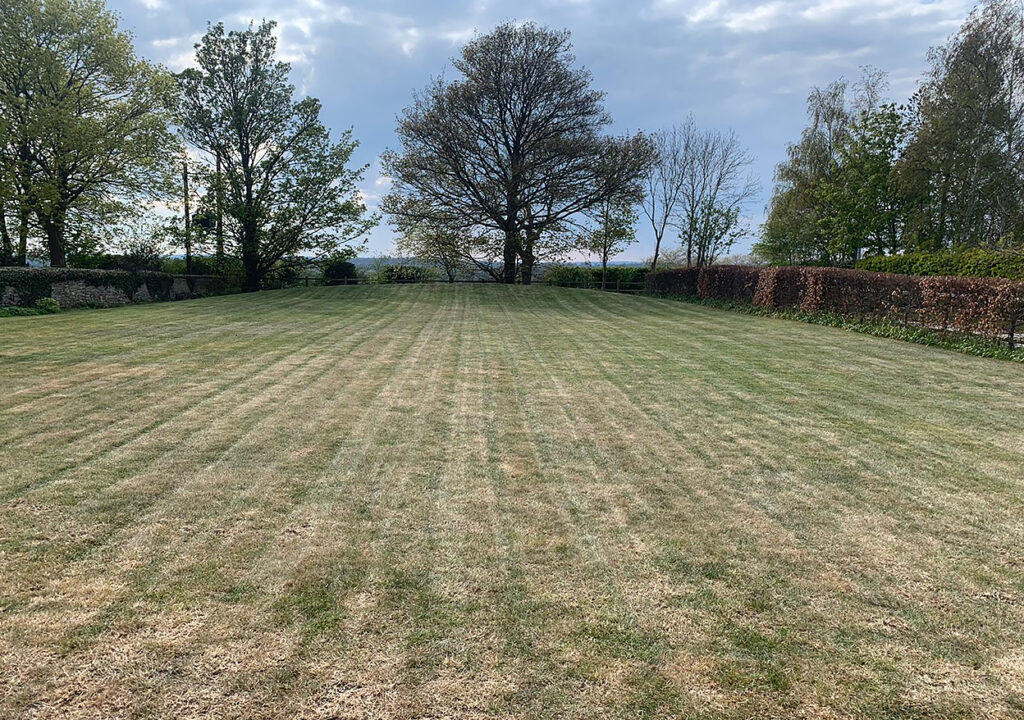
January
Usually grass will not be growing, but a Winter cut on a high setting will be beneficial. Try to avoid walking on the lawn in heavy frosty conditions. The application of a Winter treatment will be beneficial to help the lawn cope with the cold weather conditions and also prevent moss sporing.
Now is the time to check your lawnmower over and possibly get it serviced and sharpen the blade. It is also a good idea to prune any overhanging trees and hedges that shade the lawn and clear any fallen leaves that remain.
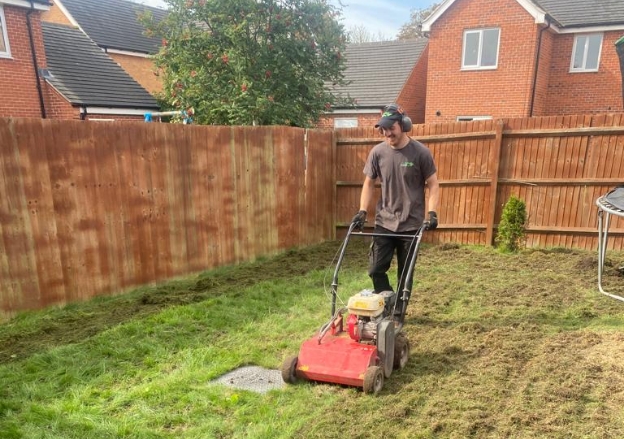
February
Depending on weather conditions, another gentle mow on a high setting would be beneficial. Keeping the grass long ensures it will absorb any sunlight to make the grass thrive in cold conditions. This is the time to book in any Spring renovations required such as scarification, aeration and/or overseeding. Keep an eye out for any lawn diseases such as fusarium especially if snow has been about.
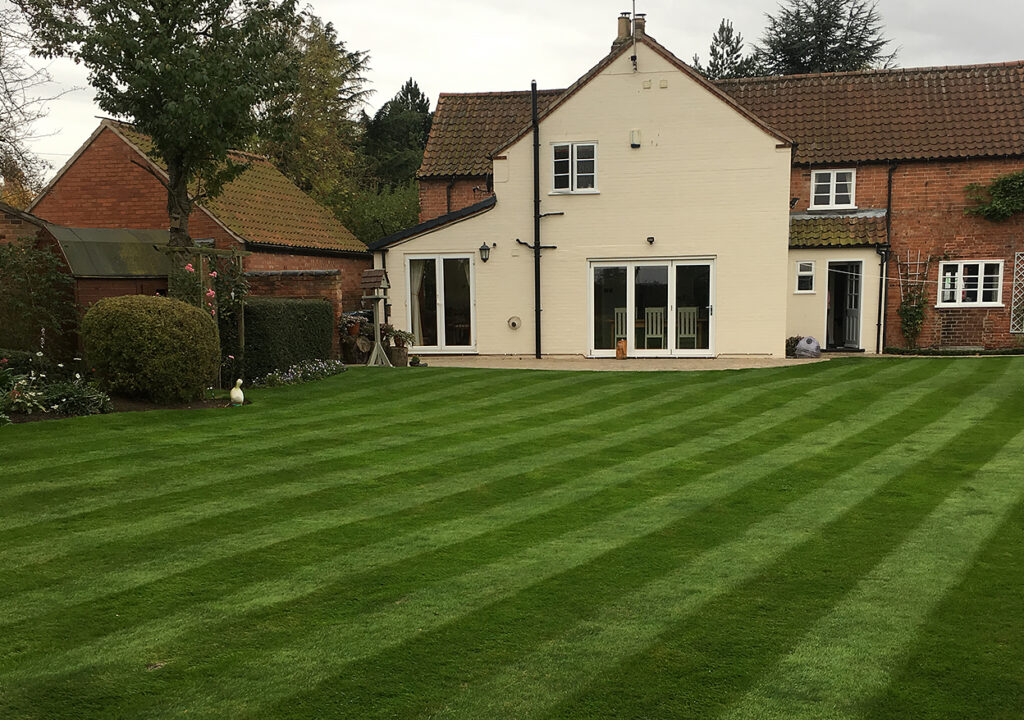
March
The most important month in the lawn care calendar. As the soil temperature warms up, this is the time to do any mechanical work such as aeration and scarification as well as apply a Spring fertiliser which will green, thicken and strengthen the grass. Treat any moss remaining and deal with any early emerging weeds. This is also the time to start regular mowing again, still keeping the cut height fairly high.
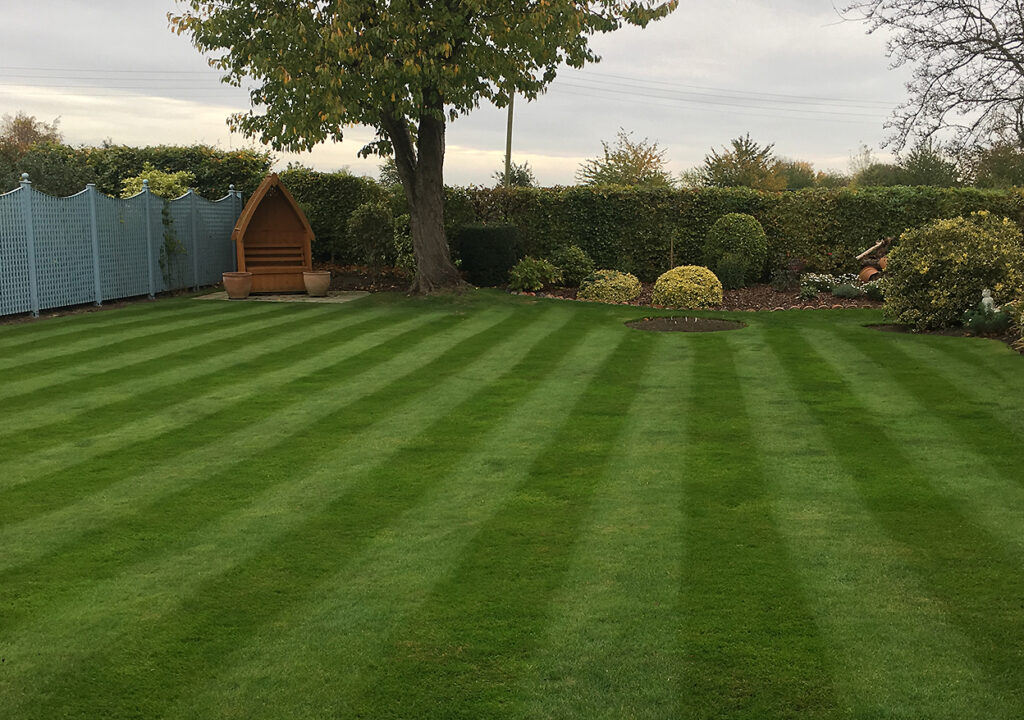
April
The busiest month in the year for the garden as everything is coming to life. Your lawn will be very hungry now as the grass plants will be trying to seed which will use lots of nutrients. If you see the grass seeding try to prevent this by regularly mowing the seed heads off. It helps if beforehand you rake the long spindly stems into the air so the mower blade will catch them. This will confuse the plant and it will abandon the idea of reproducing. This is also the perfect time for overseeding which will introduce young grass into the sward and also cover any bare areas.
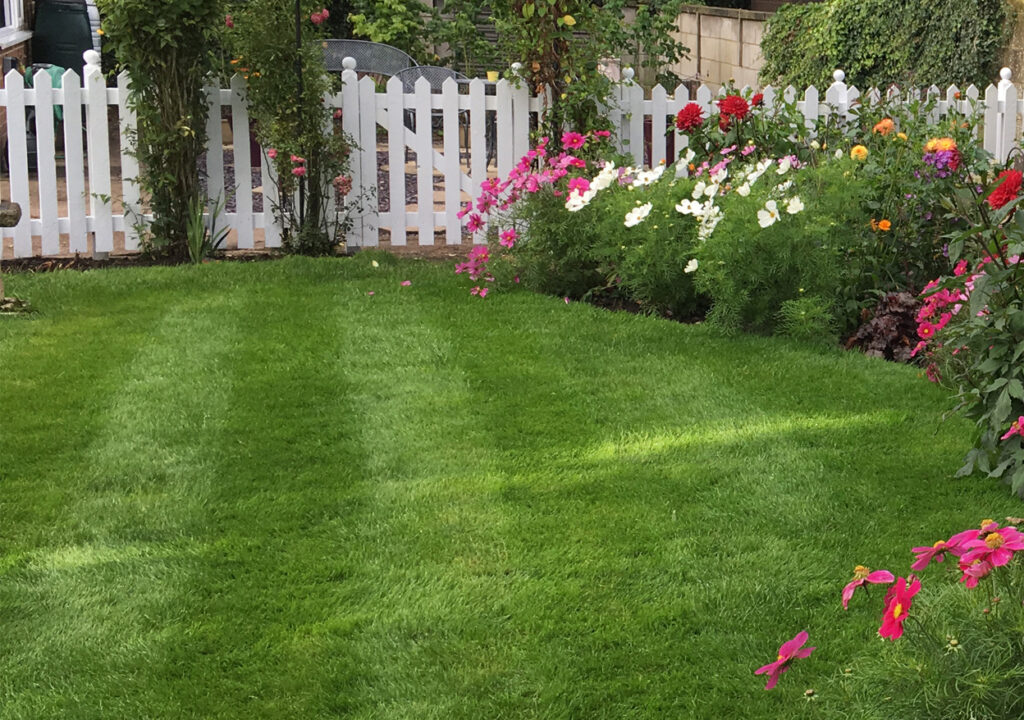
May
In May, you should start to see the benefits of the lawn work undertaken in previous months. As this is a fast-growing period for the lawn, you should aim to mow little and often and avoid cutting more than a third off. Again, keep dealing with any attempts the grass is still making to seed. An early Summer feed will be required to prepare for the frequent usage of the lawn over the Summer. Again, any weeds should be spot-treated if necessary. Keep your eye out for red thread over the Summer which is a fungal disease and if it appears, get it treated as soon as possible.
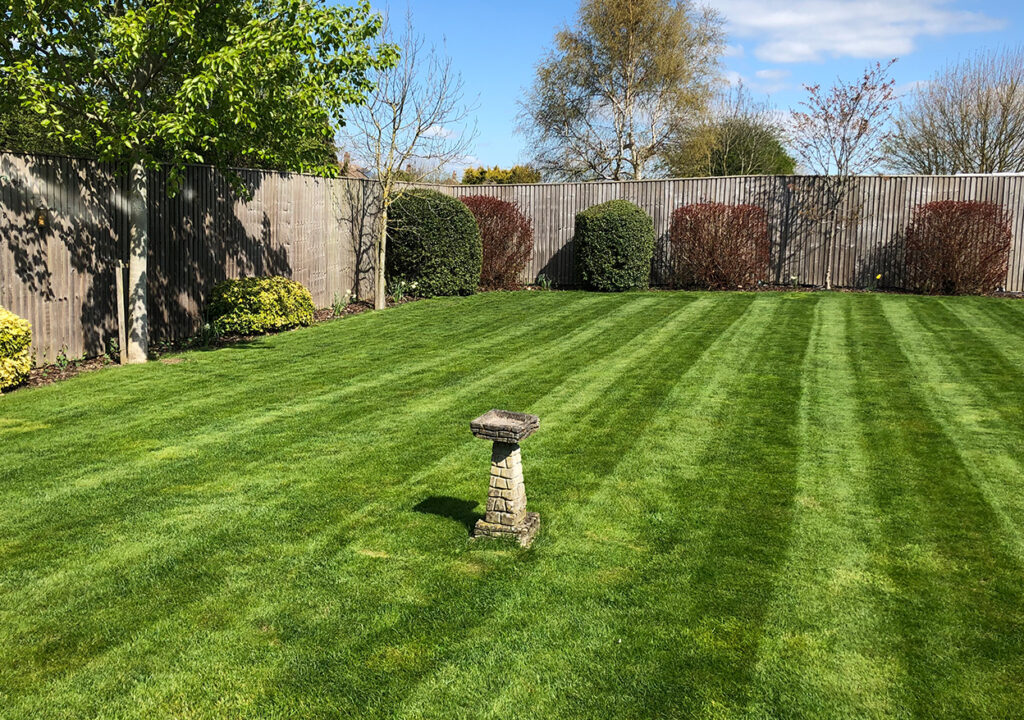
June
This is the time when there could potentially be some dry weather. If there are signs indicating this possibility, then raise the cut height and resist the temptation to cut your lawn too short. Grass stores its moisture and nutrients in the root and stalk, so the higher it is, the greater the storage capacity. Higher grass will also shield the root zone from the sun, keeping it moist and greener during dry conditions.
If you have big events planned over the summer, your treatments can be adjusted accordingly to ensure your lawn peaks at the right time.
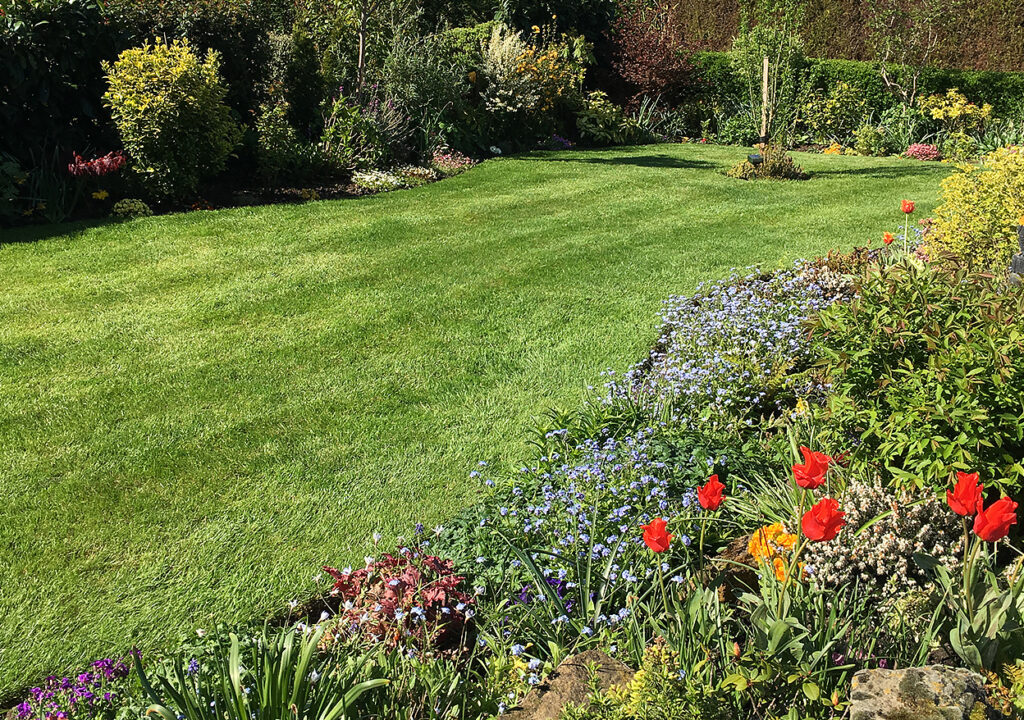
July
The weather could turn extremely hot, causing lawns to lose their green colour and turn straw-coloured. This is a natural occurrence and nothing to worry about, but if you want to maintain its green appearance, you will need to irrigate it. Giving it a good soaking at least twice a week is much more effective than a daily sprinkle.
Try not to leave garden furniture, trampolines, and goal nets in the same place for extended periods, as the damage caused can be challenging to repair during this time of the year.

August
This could be the best month of the year for your lawn if you have followed all the previous procedures. Grass growth will slow down and there’s not a lot to do other than enjoy your lawn. Games, parties, drinks, BBQ’s, and music can be enjoyed and your lawn can be the envy of any friends and family that you invite around. Only mow your lawn if you need to and don’t be tempted to scalp it; you will undo all the hard work you have put in.
Keep an eye out for daddy long legs (crane fly) to avoid an attack of leather jackets. If concerned, these can be treated professionally by Prograss.
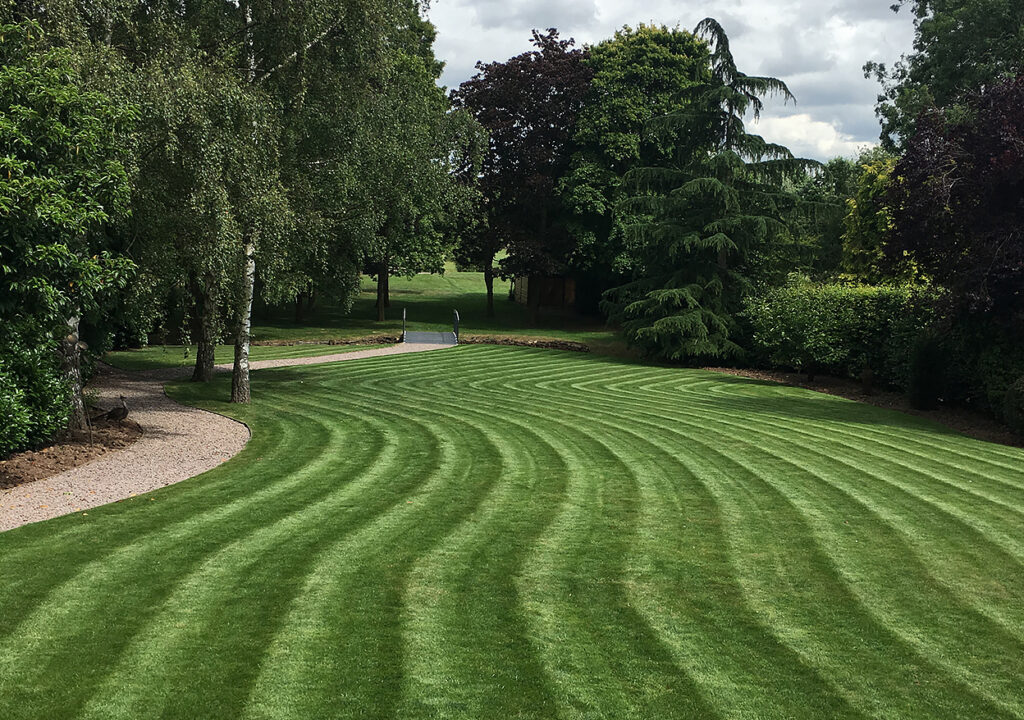
September
With Autumn approaching, things will change pretty quickly in the garden as moist, mild weather will bring a surge in grass growth and plants will come out of their Summer dormancy period. Unfortunately, fungal diseases also thrive in these conditions, as do mushrooms and toadstools. Mushrooms and toadstools are harmless and won’t damage your lawn; however, fusarium and red thread will so keep your eye out for these. Fertilisers will be very different at this time of the year as nutrient requirements change.
This month is also the start of the season for any Autumn mechanical (aeration and scarification) work that you may require so if you haven’t already done so make sure you have this booked in. Any overseeding and patch repairing should also be done over the next couple of months.
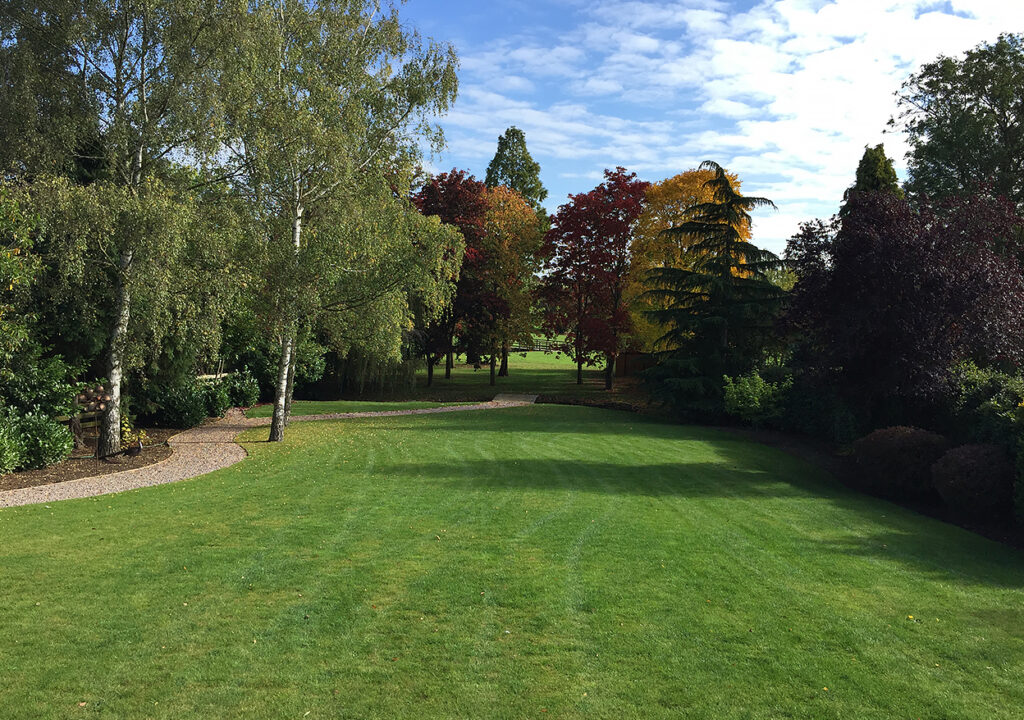
October
This is the month to prepare your grass for the rigours of Winter. Any renovation work that may be required after the Summer should be done in this Autumn period. Reduce mowing frequency, increase cut height and treat any weeds that remain as they will struggle to absorb the chemicals over Winter.
The Autumn fertiliser is the most important one as the lawn must have the correct nutrition to fight off disease, control moss and make sure the grass is as frost-hardy as possible.
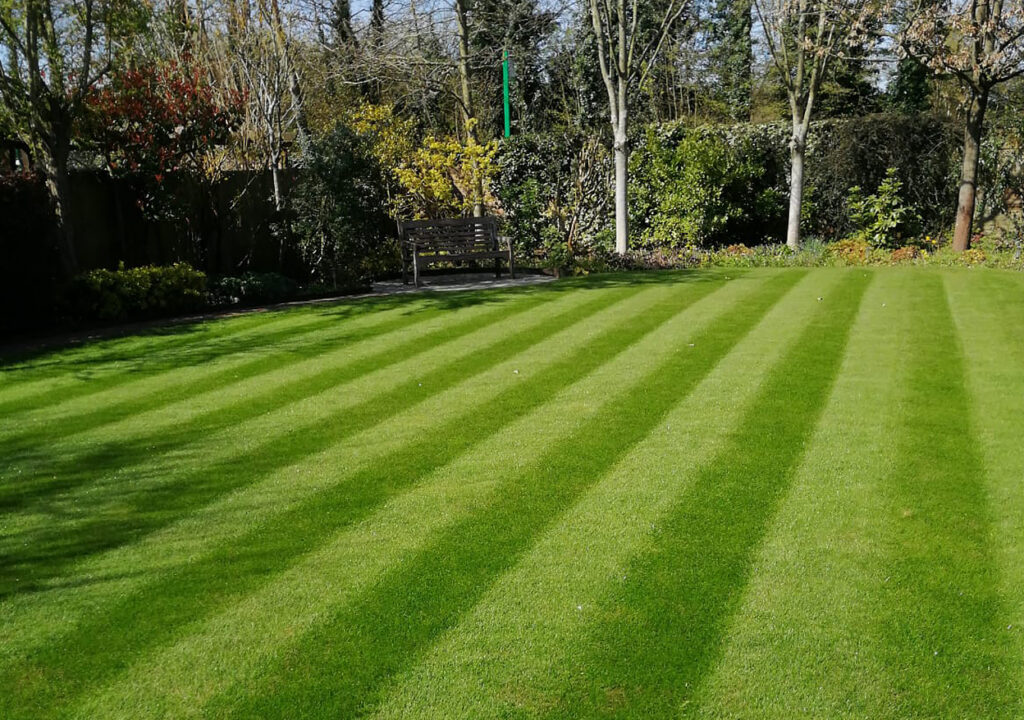
November
With the days getting shorter and the evenings getting darker, grass growth slows down considerably. Winter is coming and leaves will be falling and if left they can cause great damage to your lawn leaving an unnecessary repair next Spring. I know it is a tedious job, but they need to be collected regularly and it may be worth investing in a good quality leaf blower, especially if you have a large lawn. Weather permitting, it is not too late for mechanical work (aeration and scarification) and if the weather is still mild, seed can still be applied to achieve first-stage germination. If not already completed, applying an Autumn feed is crucial to safeguard the lawn during the Winter months.
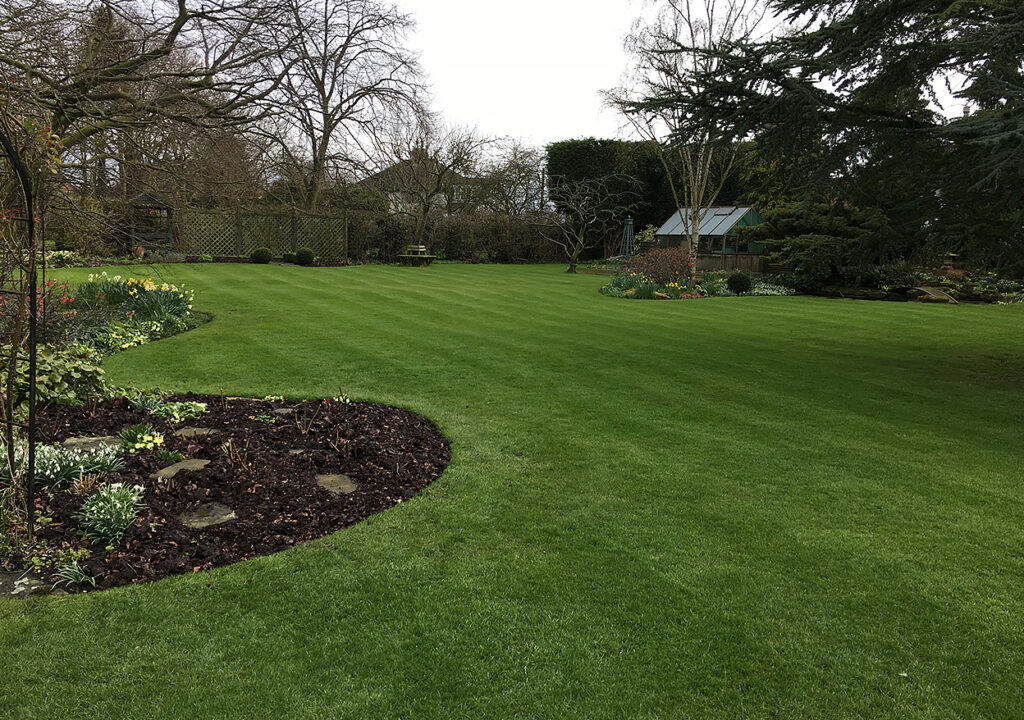
December
Even with the patio doors closed, it’s still worthwhile considering a final mow if the weather permits. Allowing the grass to grow too long during winter will deprive the root zone and lower part of the grass of air and light, leading to stress and discoloration during the first cut of the following year. Additionally, ensure any remaining leaves are cleared.
Now is also the time to reflect on the past year and evaluate your lawn care practices. Are there any areas for improvement or issues that could have been prevented? Keep an eye out for fresh moss spores and treat them if necessary.

